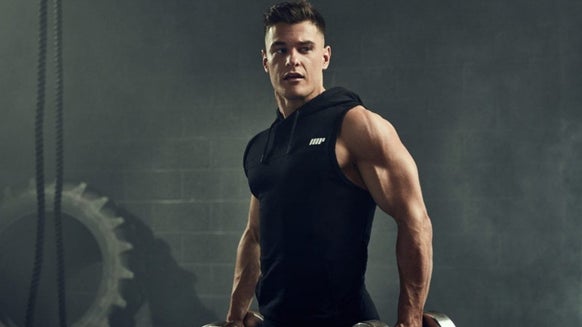
Cross training can often provoke strong reactions from people — it’s sort of like the marmite of the fitness world, in the way that people are either completely baffled by it, or completely obsessed with it.
In an attempt to shed some light on this divisive sport, we spoke to Daniel Campbell (
), Head Coach at TRAIN Heald Green, a cross training gym in Manchester.How would you summarise cross training to someone who’s never done it?
Cross training now exists in two spheres. At the one end, we have competitive cross training at an elite level — this is what most people think of as cross training. They see the cross training games or documentaries showing people doing muscle-ups and putting huge weights over their head.
For many people, this isn’t what their actual experience of cross training will be. In reality, it’s simply a training method that combines elements of strength work, cardio respiratory fitness, and body weight exercises.
The emphasis is on self-improvement and doing so amongst a community of like‐minded people who all just want to get a bit fitter, and feel good whilst enjoying themselves.
How is it different to regular gym workouts?
I think the biggest differentiating factor between regular gym workouts and cross training is the community and the intensity.
In a regular gym people tend to stick to themselves — they do their own thing and don’t interact with others. In a cross training gym everyone in a class is training together, which stokes a little competitive fire and means people tend to try a little harder — pushing for an extra rep or kilo on the bar.
The whole environment is still friendly while being competitive though — everyone will cheer you when you hit a personal best in a cross training gym.
Can anyone do it?
Yes, anyone can do cross training, but the question that has to asked is whether all the movements are appropriate for everyone. For example, does the guy who’s done no exercise for the last 15 years, but has come in just to get a bit fitter and stronger, need to do a snatch? Probably not, he would get more benefit from a kettlebell swing.
That’s where the beauty of cross training comes in — it’s universally scalable, meaning you can sub in more appropriate movements or change the weights so that everyone can get the same kind of challenging experience from the workout, just in a manner that is safe for them.
How did you get into cross training?
About 4/5 years ago, I came across cross training online when I saw a “Hero workout” called “The Seven”. I set myself up in my local gym and gave it a go.
At the time I was fit and playing semi-pro rugby, and so I couldn’t believe how difficult it was, or how fast the times posted were and how bad I was compared to everyone else. That lead me to seek out my first box (cross training gym).
Would you say that cross training has changed you?
Cross training has served as a catalyst for several changes in my life. I did a law degree at university and was on the path to becoming a solicitor — now I coach cross training on a full times basis, as well as having my own online coaching business for people who want to prioritise their fitness.
Cross training led me down this path, it was a stepping stone that allowed me to appreciate that you need to pursue what you’re passionate about in life.
In terms of physical changes, 31-year-old me would wipe the floor with 24-year-old me in pretty much any physical contest.
What’s the most challenging aspect of cross training?
The most challenging aspect for most is checking their ego and taking a step back. People see cross training and they want to come in and start doing muscle ups and snatching heavy weights — that’s like watching Champions League football and thinking you’re the next Ronaldo.
It just doesn’t work like that; first you have to spend time mastering the basics before you can progress. That’s not to say it isn’t possible to do all the things people see the top cross trainers doing, but it takes time to get that good. You have to make sure your technique is solid before you start adding lots of weight, make sure you can do a strict pull ups before you start kipping, etc.
This is also a responsibility of the box you go to and again comes back to cross training being scalable for all people who participate.
What’s your advice to someone thinking about starting cross training?
Find yourself a good box, don’t be afraid to scale, ask lots of questions — and most of all enjoy yourself, it’s meant to be fun!
Take Home Message
We think that speaking to Daniel has definitely helped to debunk a few of the myths and stereotypes surrounding the sport — whether or not he’s tempted you into giving it a go is a different matter though…







